The Food-Immune Connection with Dr. Susan Blum
- Details
- Hits: 5065
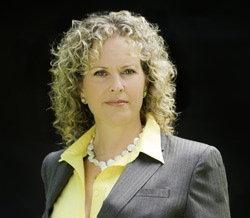 Confused about what to eat? Ever wonder whether gluten or another food is a problem for you? Functional Medicine pioneer Dr. Susan Blum will answer these and many more vital health questions at the Scarsdale PT Council Spring Meeting, taking place on April 18th at 9:15am at the Little Theatre at Scarsdale High School.
Confused about what to eat? Ever wonder whether gluten or another food is a problem for you? Functional Medicine pioneer Dr. Susan Blum will answer these and many more vital health questions at the Scarsdale PT Council Spring Meeting, taking place on April 18th at 9:15am at the Little Theatre at Scarsdale High School.
As an assistant clinical professor in the department of Preventive Medicine at the Mount Sinai School of Medicine and the founder and director of Blum Center for Health in Rye Brook, Dr. Blum has been treating, healing and preventing chronic diseases for nearly two decades. She also serves on the Medical Advisory Board for The Dr. Oz Show and the Senior Teaching Faculty at the Center for Mind-Body Medicine in Washington, DC.
Her first book, The Immune System Recovery Plan (April 2013), features her four-step program, which she has used to help thousands of patients reverse the symptoms of autoimmune disease, strengthen their immune systems, and bolster their overall health. On April 18th, she will share details of this plan, as well as her expertise on how consuming certain foods can lead to inflammation in the body, and how this in turn can damage your metabolism and weaken your immune system. She will also suggest at-home tools people can use to test themselves and their kids for different food sensitivities, which might be at the root of health concerns.
Dr. Blum practices what she preaches. More than a decade ago, she was diagnosed with Hashimotos Thyroiditis, an autoimmune disease where the body attacks the thyroid as if it were a foreign tissue. By following the same Functional Medicine and lifestyle principles she prescribes to her patients, Dr. Blum cured herself of this serious condition.
For more information, please contact Leesa Suzman (917-796-1836; leesasuzman@verizon.net). This event is sponsored by the Scarsdale PT Council and will be preceded by a brief PT Council meeting.
SBNC Announces Candidates for Scarsdale School Board
- Details
- Hits: 5902
Jonathan Tamir and Erin Foster of the SBNC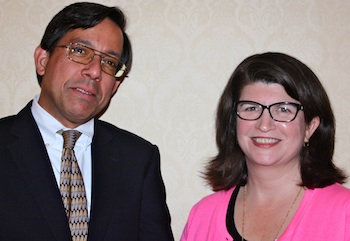
Comprised of 30 voting members and four non-voting members as well as a vice chair and a chair, the SBNC met over seven Sundays to select candidates based "solely on their qualifications to serve the community" as prescribed by the SBNC resolution. According to SBNC Vice Chair Erin Foster, "the SBNC made their selection from a group of very well qualified individuals seeking to devote their time and talents to serving on the Scarsdale Board of Education."
Here's information on the candidates:
Bill Natbony is an attorney and a 21-year resident of Scarsdale. He and his wife Cheryl have four 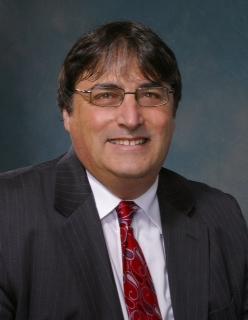 children; Josh who graduated from the University of Pennsylvania in 2012 and now works in New York City, Rachel, who attends the University of Delaware and Sam and Emily, both now at Scarsdale High School.
children; Josh who graduated from the University of Pennsylvania in 2012 and now works in New York City, Rachel, who attends the University of Delaware and Sam and Emily, both now at Scarsdale High School.
Natbony is a man of many talents and graduated as the valedictorian of the NYC School of Performing Arts in 1976. He was a child actor and member of Actor's Equity and Screen's Actor's Guild. He went on to Princeton University for his BA and then to Georgetown where he earned his law degree. During law school he taught a course in Street Law at a public high school in Washington D.C.
Commenting on his nomination, Natbony said, "I am honored that the Nominating Committee has selected me as a candidate for the Scarsdale Board of Education. If elected, I look forward to collaborating with my fellow Board members, community residents and school representatives in order to preserve and improve our school system, which is one of the most valuable assets of our community."
We asked Natbony why he decided to put himself forth and here is what he shared:
"Public school education has always been an extremely important part of my life. I am the proud product of a public school education, having attended public school in New York City though the 12th grade. Through the Justice Resource Center in New York City and through my extensive pro bono activities relating to education, I have designed and implemented programs that partner corporate and governmental entities with public schools to enhance aspects of public school education. I have four children, each of whom has benefitted greatly from the fine education that Scarsdale's public schools provide, with two children still in the school system. I view our public school system as one of the most important assets, if not the most important asset, of our community. The quality of our schools, along with our outstanding recreational programs and open space and parks, serve to attract families and homebuyers to our community. It was why my family came to Scarsdale over 20 years ago.
As a father, resident and as someone with a deep concern for the youth of our community, the passion for and commitment to maintaining and improving the quality of education we provide run incredibly deep.
Aside from my demonstrated passion for public school education generally, my education and professional and community service experience has provided me with certain tools and lessons that would be of great use as a School Board Member. Having been a litigator and counsel to numerous corporate and not for profit organizations, I have been involved in searches for Chief Executive Officers, attended numerous Board meetings and provided day to day advice on governance, financial and operational issues raised before such Boards. Conflict resolution through listening and understanding the issues, and reaching a fair and reasoned result, has always been a primary goal in my professional work. Collaboration is key.
In Scarsdale, I have served on the Board and as President of Little League, with responsibility for the development of policy, budgeting and programs. As a PRC member, and Chairman for several years, I had the opportunity to deal with budget issues, development of broad policy, and the resolution of numerous issues raised with great emotion by parents, children, and representatives of ISOs. My past positions and community service demonstrate a strong desire to better the lives of our children in this community. I am looking to continue my service to Scarsdale and to the youth of Scarsdale in a significant way. Serving on the School Board would enable me to continue this important service in a meaningful manner.
Lee Shames Maude is "honored and excited" to be selected as a nominee for the Scarsdale School Board and wishes to thank the SBNC for giving her their approval. She has lived in Fox Meadow for twelve years and has a daughter in fifth grade at the Fox Meadow School and a son who is a junior at Scarsdale High School. After a 28-year career as a corporate credit analyst, she turned to volunteer work and has served extensively in the Fox Meadow School and the community.
She is currently on the executive committee of the Fox Meadow PTA and co-chaired the fall benefit, the staff appreciation lunch, pizza day and new families orientation. She serves as the treasurer of the Fox Meadow Neighborhood Association, leads a monthly conversation class for non-native speakers and is also Co-Chair of the Monthly Mitzvah Committee at Westchester Reform Temple.
Shames Maude has a deep appreciation for the Scarsdale Schools and is impressed with their adoption of the Singapore Math Program, the Language Skills Program and the new Center for Innovation. As a member of the Board of Education she hopes to play a constructive role in helping the administration to further it's mission. She has years of experience looking at budgets and forecasts and interviewing management teams. She now hopes to lend her expertise to help the administration meet their goals.
As her daughter moves from elementary school to Scarsdale Middle School, Shames Maude feels that a position on the School Board will be a good next step. She has time to devote and looks forward to delving into the business of the board. She has an undergraduate degree from Union College and an M.B.A. from the University of Michigan.
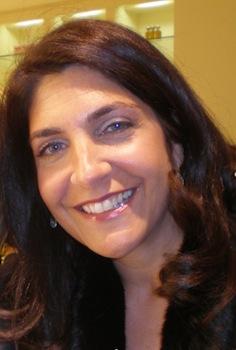 Board of Education Vice President Suzanne Seiden has been nominated to serve a second three-year term on the School Board. When she was nominated for her initial term in 2010, Seiden was challenged for her seat by Bob Harrison in a rare instance of a contested election for a seat on the school board. Seiden campaigned and prevailed, getting 1773 votes to Harrison's 941. In her first term Seiden has been an active board member and currently serves as Vice President. With children still in the schools and an impressive resume of school volunteer positions she has lent a parent's perspective to board discussions and advocated maintaining class sizes and adequate district staffing.
Board of Education Vice President Suzanne Seiden has been nominated to serve a second three-year term on the School Board. When she was nominated for her initial term in 2010, Seiden was challenged for her seat by Bob Harrison in a rare instance of a contested election for a seat on the school board. Seiden campaigned and prevailed, getting 1773 votes to Harrison's 941. In her first term Seiden has been an active board member and currently serves as Vice President. With children still in the schools and an impressive resume of school volunteer positions she has lent a parent's perspective to board discussions and advocated maintaining class sizes and adequate district staffing.
Here is what we wrote about Seiden in 2010:
Suzanne has been a tireless volunteer at all levels of the Scarsdale school system and in our community. In all her activities, including as president of the Middle School and Quaker Ridge PTAs, Ms. Seiden has continuously demonstrated a passion for the critical issues facing the our school district as well as a capacity to work with others to deliver meaningful results.
Over the past nine years, Ms. Seiden has had numerous leadership roles, starting with her efforts for two years as Co-Chair of the PT Council Young Writers' Conference and as Co-Chair of the Scarsdale Schools Bond Committee in which she helped organize and lead the community's efforts to pass a bond to support necessary construction on the Quaker Ridge School. She subsequently served the Quaker Ridge PTA president-elect and president where, among other efforts, she worked with the other PTAs to change the funding of elementary school playgrounds.
Following her experience at the elementary school level, Ms. Seiden served as the President-elect and then President of the Middle School PTA where she focused on creating a school of empathy and implemented a new fundraising program for the school. She has also had leadership roles on the Scarsdale Task Force on Drugs and Alcohol where she worked with other parents, school administrators, and Village representatives to create and deliver programs and educational material for youth and adults about drugs and alcohol. She also currently serves as the Publicity Chair for the Scarsdale High School Scholarship Fund.
In addition to her activities with our schools, she has volunteered on a number of community organizations including with the UJA Federation, Scarsdale League of Women Voters, and Temple Israel Center.
All three candidates will be on the ballot on Tuesday, May 21, when the community will elect school board members and vote on the 2013-2014 school budget.
Edgemont SBNC Selects School Board Nominees
- Details
- Hits: 3621
 This letter was received from Monica Spanga, Chairman of the Edgemont School Board Nominating Committee on March 6, 2013: Last night, the School Board Nominating Committee recommended David Chao, David Stern and Michael Bianchi to fill the three impending vacancies on the Board of Education. The SBNC had the good fortune of having four very strong nominees this year and much thoughtful deliberation ensued.
This letter was received from Monica Spanga, Chairman of the Edgemont School Board Nominating Committee on March 6, 2013: Last night, the School Board Nominating Committee recommended David Chao, David Stern and Michael Bianchi to fill the three impending vacancies on the Board of Education. The SBNC had the good fortune of having four very strong nominees this year and much thoughtful deliberation ensued.
The Committee will host its annual Candidates' Forum on April 17, 2012, at 8pm in the Greenville school cafeteria. All members of the community are encouraged to attend.
I am extremely thankful for having had the privilege of being the Chair of a School Board Nominating Committee consisting of 19 members representing seven civic associations, The Edgemont Community Council and the Edgemont student body, who served with extreme thoughtfulness and dedication throughout the nomination and recommendation process.
Thank you and regards,
Monica Sganga
Edgemont Community Council
Weather Guy: A Winning Streak Comes to an End
- Details
- Hits: 5353
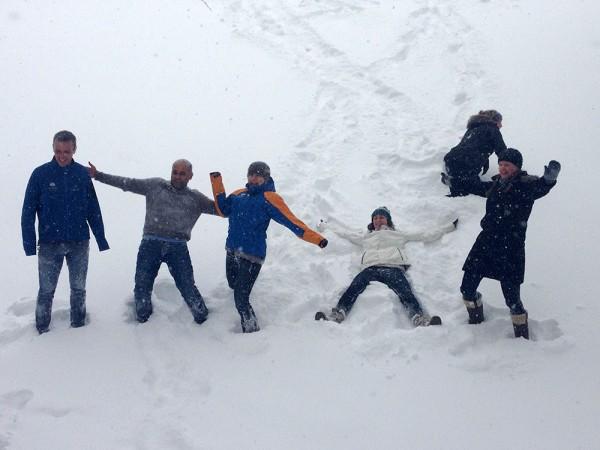 It is a scene replicated throughout the nation the night before a storm. Across every social medium, whether Facebook, Twitter, or text message, students discuss the possibility of a delayed start, early dismissal, or even cancellation. Of course, Scarsdale students are not exempt from this phenomena and can be even be seen making Facebook pleas to Assistant Superintendent Linda Purvis, who is on the other end of the line when snow days are announced. However, Scarsdale students have another unique source, one that, up until this past Thursday, had proven infallible -- science teacher John Neering.
It is a scene replicated throughout the nation the night before a storm. Across every social medium, whether Facebook, Twitter, or text message, students discuss the possibility of a delayed start, early dismissal, or even cancellation. Of course, Scarsdale students are not exempt from this phenomena and can be even be seen making Facebook pleas to Assistant Superintendent Linda Purvis, who is on the other end of the line when snow days are announced. However, Scarsdale students have another unique source, one that, up until this past Thursday, had proven infallible -- science teacher John Neering.
Over the past five years, Neering had accurately predicted every snow day, delayed start and early dismissal in the Scarsdale School District. As a biology and environmental science teacher, Neering is familiar with weather patterns and meteorology. In the days leading up to a potential snow day, he reads weather blogs, reports and other forms of online information to make his prediction. Then, using a combination of the information he has gathered and his own intuition, he makes his prediction.
Neering has inevitably established a following in the high school and almost students eagerly await and seek out his prediction. Dozens of students visit his office the day before a storm, many of whom are not even in his classes. But even Neering willingly admits that it has been "a combination of luck... [and] lots of reading of model analysis information from the blogs" that has led to his streak. Unfortunately, as with all streaks with a degree of luck involved, this one had to eventually come to an end.
This past Wednesday, Neering predicted that there would be a two-hour delay the next day. "The info I used led me to believe that we would get at least a few inches of snow," he explained. After school, however, Neering realized, "the storm was not behaving in D.C. as was modeled and [I] began to doubt my prediction." Sure enough, Scarsdale students woke up the next morning, and, to their chagrin, realized there was no snow on the ground and that Linda Purvis had not called.
Whether crowds of students will still flock to Neering's office and take his predictions as fact remains to be seen. Though the aura of invincibility may be gone, he says, "I guess if people ask I won't hesitate to offer my humble prediction."
This article was contributed by Brian Solender, a senior at Scarsdale High School, and a former reporter, assistant editor and sports editor for the Maroon.
What Can Scarsdale Girls Learn from Sheryl Sandberg?
- Details
- Hits: 4181
 (This article was contributed by Tina Henderson) The empowerment of women continues to be of utmost importance in our society. Sheryl Sandberg, chief operating officer of Facebook and creator of the "Lean In" movement, reminds us "despite decades of efforts and some visible exceptions, the number of top women leaders in many fields remains stubbornly low: for example, 21 of the current Fortune 500 chief executives are women." (New York Times article, "A Titan's How-To on Breaking the Glass Ceiling," February, 22, 2013). Ms. Sandberg's effort has generated criticism from some pundits who believe her perspective comes from an elite and privileged position. We would argue that her consciousness-raising is timely and fantastic.
(This article was contributed by Tina Henderson) The empowerment of women continues to be of utmost importance in our society. Sheryl Sandberg, chief operating officer of Facebook and creator of the "Lean In" movement, reminds us "despite decades of efforts and some visible exceptions, the number of top women leaders in many fields remains stubbornly low: for example, 21 of the current Fortune 500 chief executives are women." (New York Times article, "A Titan's How-To on Breaking the Glass Ceiling," February, 22, 2013). Ms. Sandberg's effort has generated criticism from some pundits who believe her perspective comes from an elite and privileged position. We would argue that her consciousness-raising is timely and fantastic.
Women "hold ourselves back in ways both big and small, by lacking self-confidence, by not raising our hands, and by pulling back when we should be leaning in," Sandberg writes. This must change; it can change and should change. The change should start with teenage girls. Why not tackle this concern earlier on during adolescence? Why not encourage girls to find their authentic voice, to speak out, believe in themselves, and pursue their passions?
Scarsdale's own Girls Center, the unique empowerment program, sponsored by Scarsdale/ Edgemont Family Counseling does just that. Rooted in research by Carol Gilligan and Rachel Simmons, suggesting that girls often lose their voices in the middle school years, The Girls Center, is on a heartfelt mission to boost young girls' confidence, pointing them towards leadership positions, authenticity and resilience. As one participant from last year's program said. " The Girls Center made me more open, more sure of myself. It helped improve my confidence and allowed me to feel comfortable and not alone with who I really am."
Scarsdale's own innovative approach to women's empowerment, TGC, has a lot in common with Sandberg's 'Lean In" movement. The only difference is we believe starting earlier is key. We, at The Girls Center, are passionate about helping our very own young women become the leaders and shapers of tomorrow. Won't you join in?
**TGC opens its doors March 7th. We still have a few spots left. Please call SFCS at 723-3281 by March 1st to enroll.
Tina Henderson is a long time middle school teacher and tutor. She recently co-founded The Girls Center with fellow educator and author Laurie Albanese. She studied under Carol Gilligan at The Harvard Graduate School of Education and since then has been passionate about empowering teenage girls.














